Thom Trojanowski
Interview by Peach Doble
-
Published in August 2020
-
Digging for the extraordinary, Thom Trojanowski looks underfoot – scouring the forest floor “for the sound of a leaf crunch under the step of a beetle”. Trojanowski’s works act as a curious commentary on environmental conservation; a rallying cry to protect nature’s magic, painted with warm hues and soft smudges. Trojanowski lives and works in Belgium, surrounded by the trees and marshlands of Hoge Kempen.
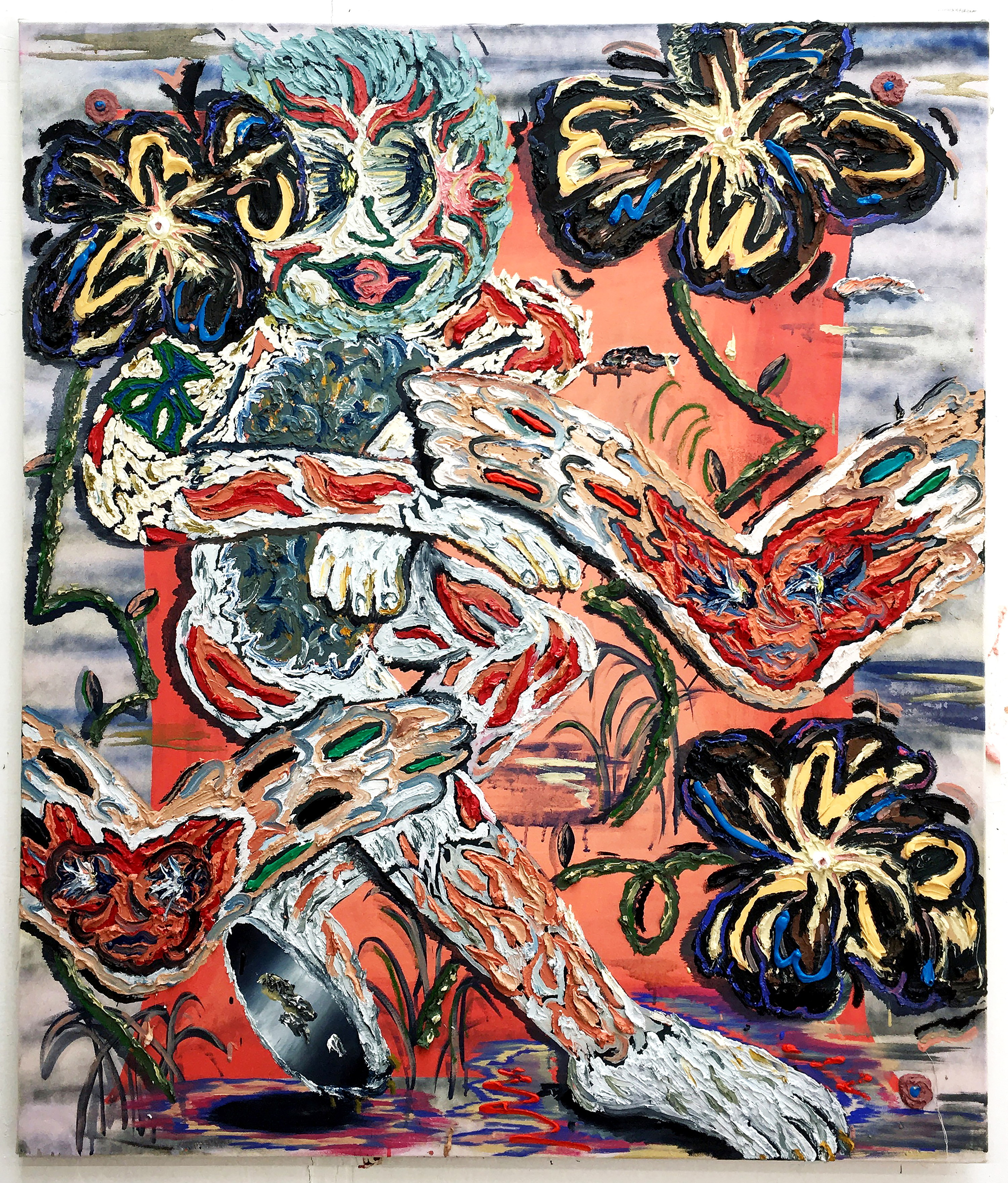
-
To begin with, you’ve sent me an image of your recent painting, The Steps Beneath.

The Steps Beneath, 2020
The painting has this really interesting aerial viewpoint of a figure stepping over and into an ethereal… other dimension, almost. Something that really strikes me with your work is this interplay between the natural and the unnatural; you create an uncanny atmosphere. Is this what you mean when you say “nature bending out of shape”?
Being raised in a forest by two ecologists, I was shown the importance of being close to nature and respecting it. My parents are artists by night, too, which also ignited and fed my imagination. As my mother is Polish, I had access to many 70’s Polish stop motion animations which played with the themes of native folklore – often usually set in the forest. So the relationship between the two was cemented in my mind from an early age. Hence why my paintings often have this character play with modernisations of Slavic spirit gods and Polish occult symbols. This imaginative discourse between the spirit world and the natural world is still given air time now, and me and my family often still talk about it.
Do you think that we’re losing some of this magic?
This planet has a movement and a path: each insect, fly, mammal and tree has its part to play in maintaining the balance. The human impact has gotten so oppressive and unsustainable that it has dramatically shifted the Earth’s course. The seriousness of our current climate situation is never stripped of its severity – it’s a constant concern and an ongoing conversation.
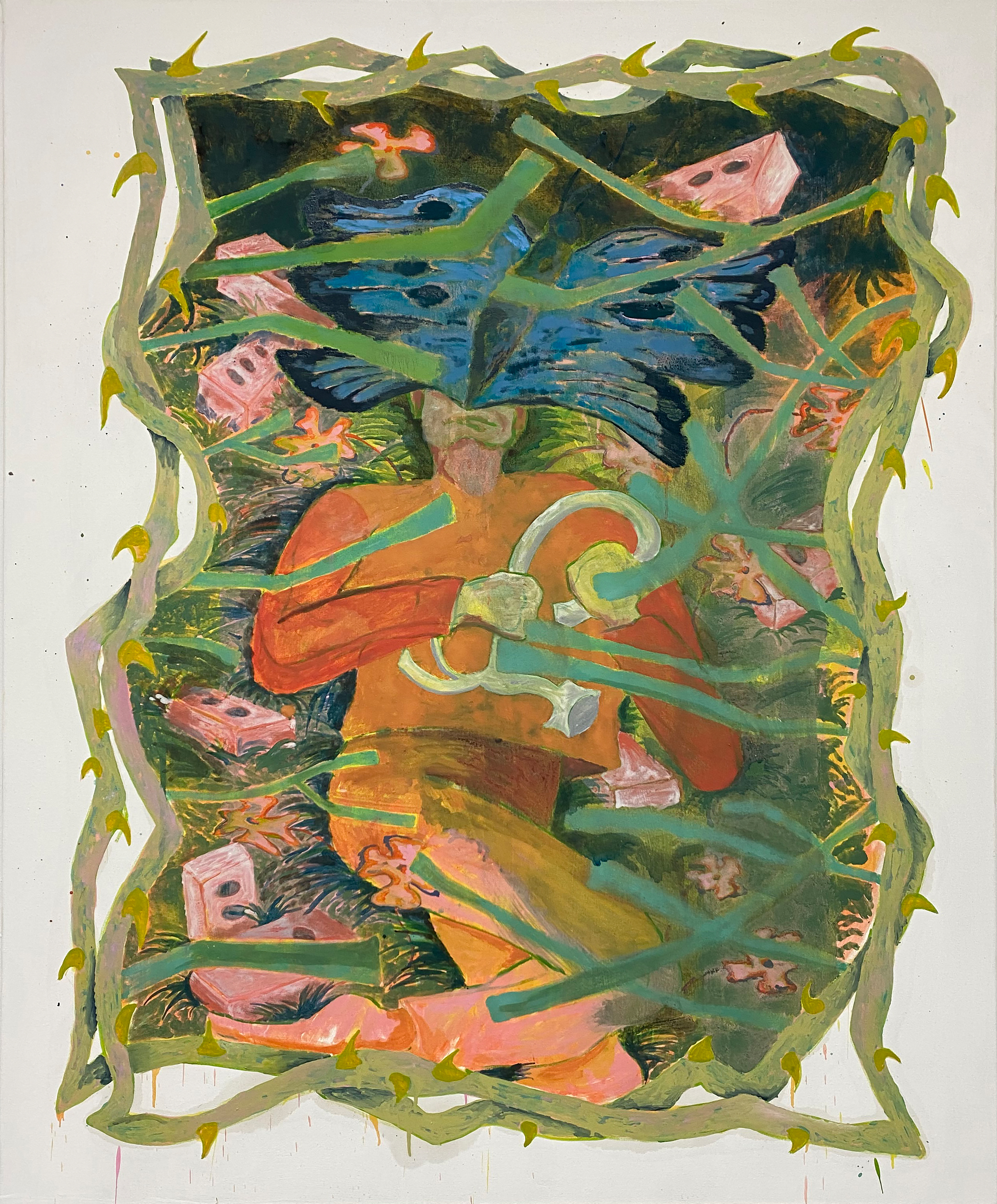
Large Blue in Decline, 2020
The outdoors also has incredible healing properties. Ecotherapy practices such as the Japanese ‘forest bathing’ can completely transform mind and body. How does the daily ritual of ‘bathing’ in the woods affect your own artistic practice?
As this world accelerates I’m finding it more and more essential to spend time in the day without a screen in front or near me, and walk for a couple of hours in the forest to my inner metronome. There is something so deeply calming and inspiring about being surrounded by a full green vista, and to feel the planet swell and exhale. Aside from the natural remedies it brings, I’m also there out of scientific interest. To see the interlinking ecosystems and their delicate interspecies symbiosis play out before me; to know and understand these systems is essential for trying to translate that beauty into art. I feel completely at home in the depths of a pitch black forest, which seems so uncommon to do now. But now, more than ever, we need to go outside and make friends with the natural world again, as this disconnect is resulting in irreversible damage.
I feel there always needs to be a signal of hope in these dark fields, and I guess this is what The Steps Beneath is about. The underside of the painting shows this monotonous, crushing march of men’s boots, but one human has broken ranks to step forward into the burning sun. Saying this now, I’m slightly embarrassed at how literal this work is, but it was an image that I just couldn’t shake. (It’s not a self portrait fyi!)

The Thud and The Crackle and The Pop and The Snap, 2020
This conflict often crops up within the iconography of your paintings. How do you perceive this idea of a footstep (literally and metaphorically) within your work?
I often think of the scene in Fantasia, where the broom handles start to rise and multiply and then march down on Mickey. It’s this overwhelming feeling of the heavy tread of relentless boots, offering no rest bite. A faceless mass, or an unforgiving and oppressive tide, taking no prisoners without reason. For me it perfectly echoes the human race as total. Politicians who deny climate change, people who deny world hunger, machines…

Trade Gallery Install, 2018
The chaos of Fantasia’s climax also resonates with your 2018 installation at Trade Gallery. Sculpted spikes pointed and criss-crossed out from the walls... in such a small room... How far does audience experience and interaction factor into the making of your works?
I wouldn’t say it does hugely, as I primarily make paintings. But I have such an admiration for well executed installations. Every solo show should be an open window into another world, so I often use tools to help encourage that. But yes, for the Trade show, the spikes played a large role. It was all a matter of time and place; Brexit had just happened and the unnerving air about the UK’s division was reflected in this inhospitable environment that was the show.
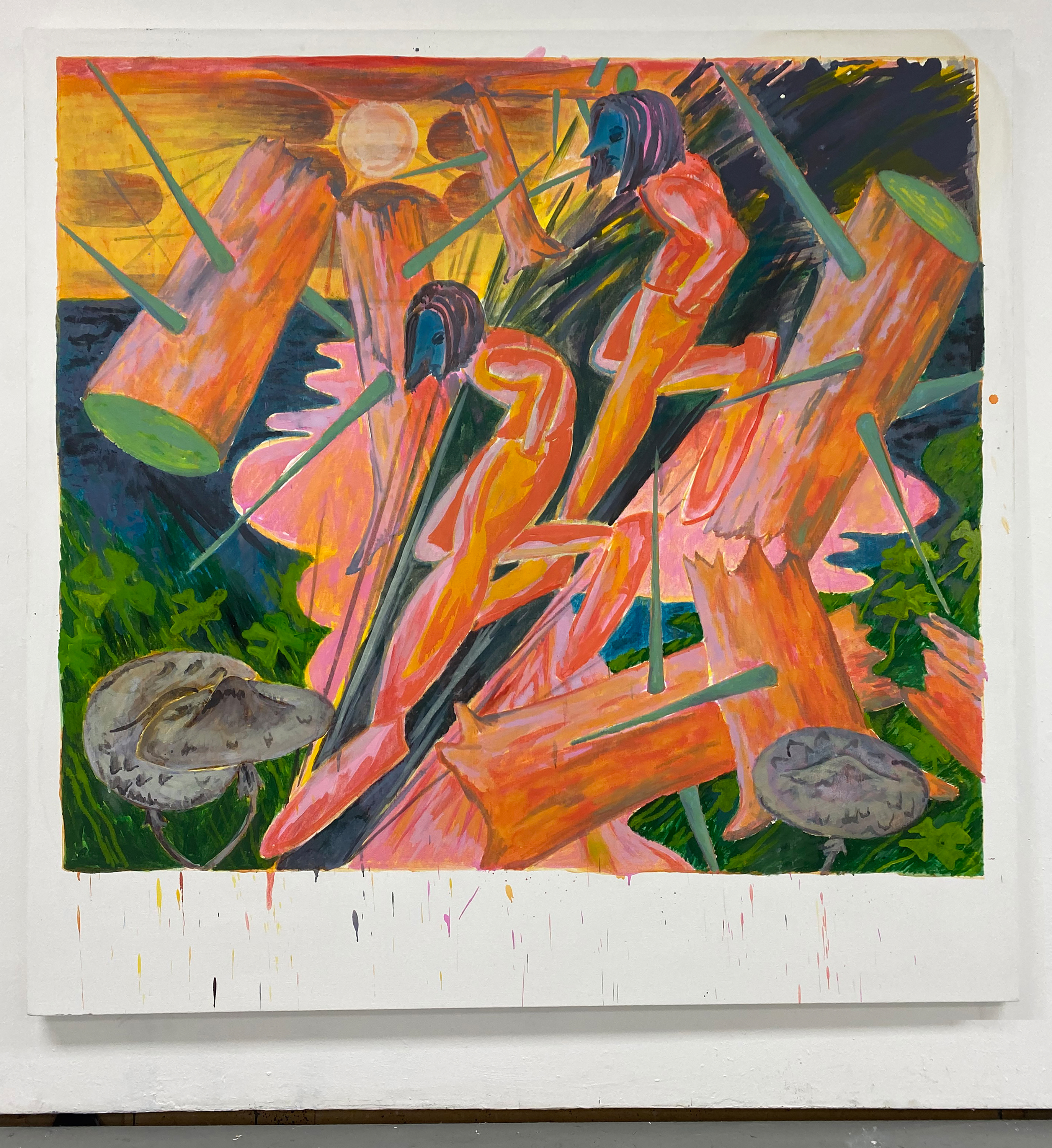
Crash, 2020
I read somewhere you said “you can’t control nature, it always grows, breaking the cement”. I’m fascinated by your relief paintings and plaster works – the compositions are broken up, cracked, offering views into smaller paintings within. Like windows. Is this what instigated the move into 3D?
When I started experimenting with 3D, I started looking at my surroundings more intensely – specifically at old hand-built stone walls. These structures are built with stone, hammered from the ground without concrete and are intended to work with the soil rather than against it. They have a lifespan to a point where they can’t contain nature’s push anymore, letting the landscape behind finally force its way through and reveal itself.
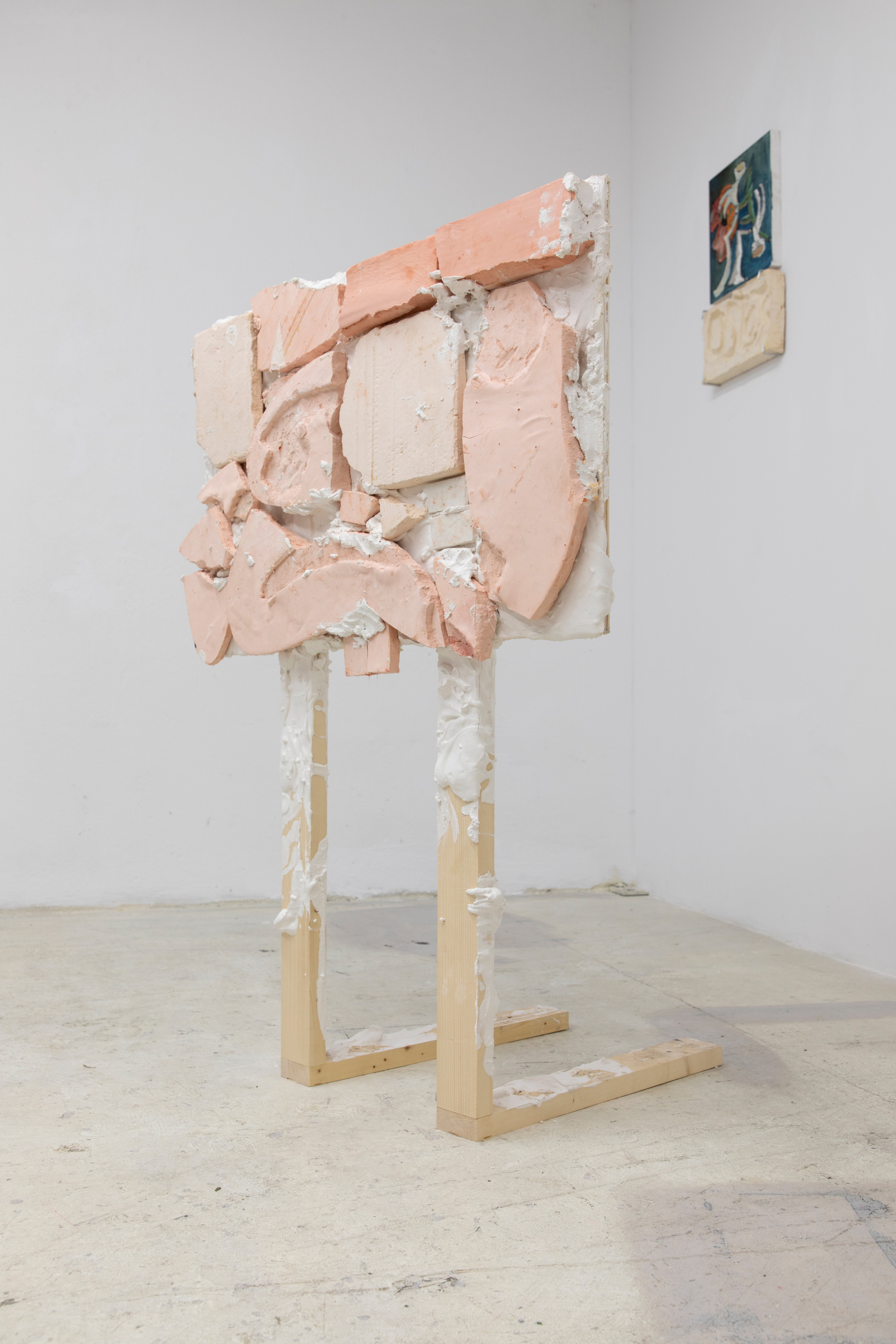
Wall Study 2, Mallorca L21, 2019
This pattern was mirrored during my residency at L21 Gallery in Mallorca. The gallery is set in the heart of quite a battered industrial estate where the pavements are pulling apart and forgotten to such a point that trees have started to grow through the cracks. I started to take some of these man made materials home, like as shattered paving slabs, and incorporate them into 3D relief pieces that allowed parts of paintings to peek through the gaps.
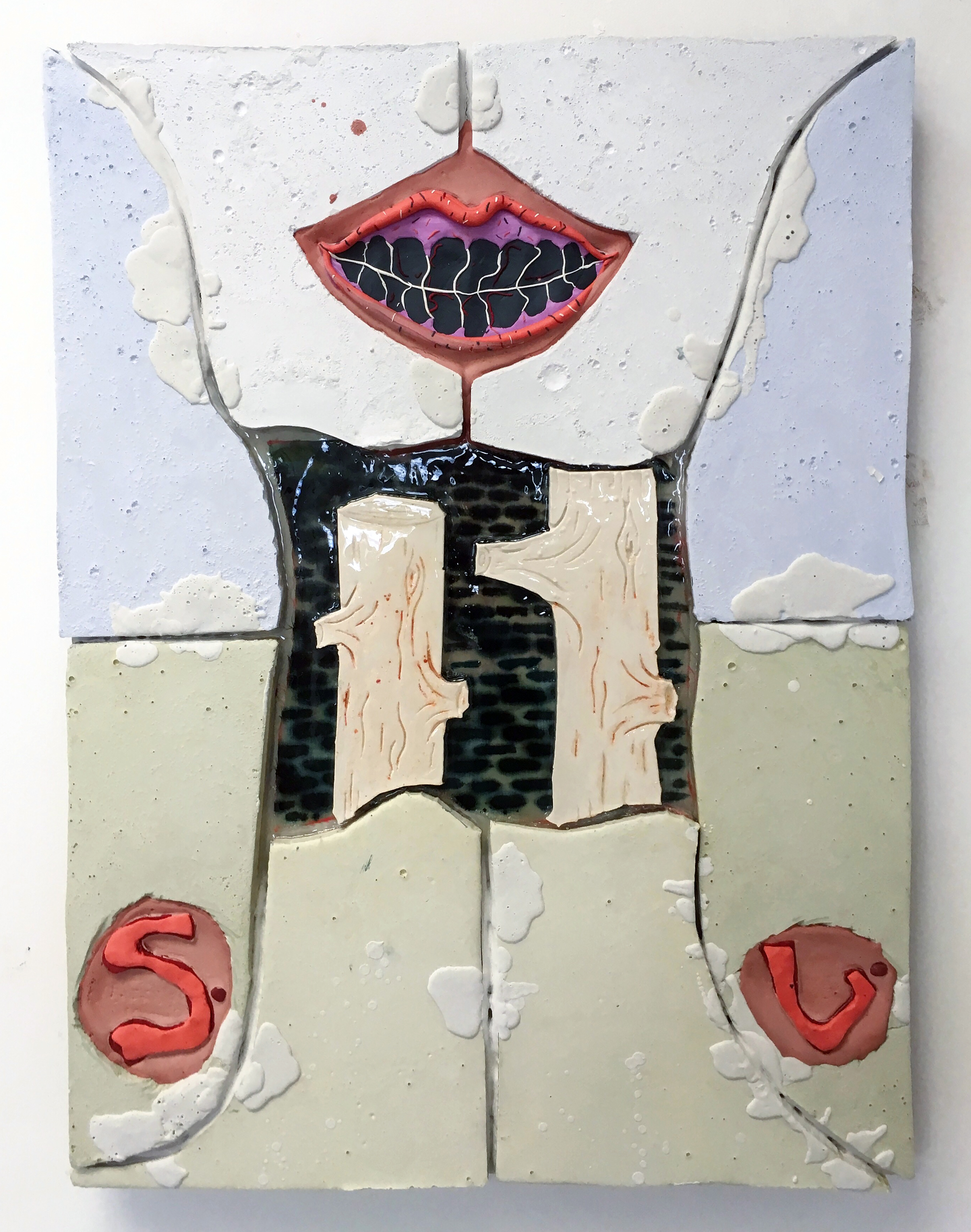
Krok Lekko, 2019
Nature is an unstoppable force, and man's time on this planet is merely a blip. It’s nice to be reminded of this and I find it reassuring to know that no matter how much concrete we pour down, a plant as fragile and as delicate as a dandelion will be able to make its way toward the light.
Sculpture and relief work has always interested me. After all, we see the world in 3D. And most often, it’s seeing the installation work of another artist that really sets me alight. But I’m not subtle or clever enough to be successful at it myself. I specifically chose plaster as a medium to make these works as it’s in its nature to be a very brittle and unforgiving material: easily broken, hard to control and quick-setting. But the problem is, these works are hard to transport as they break easily. Yeah, yeah, yeah...jesmonite.
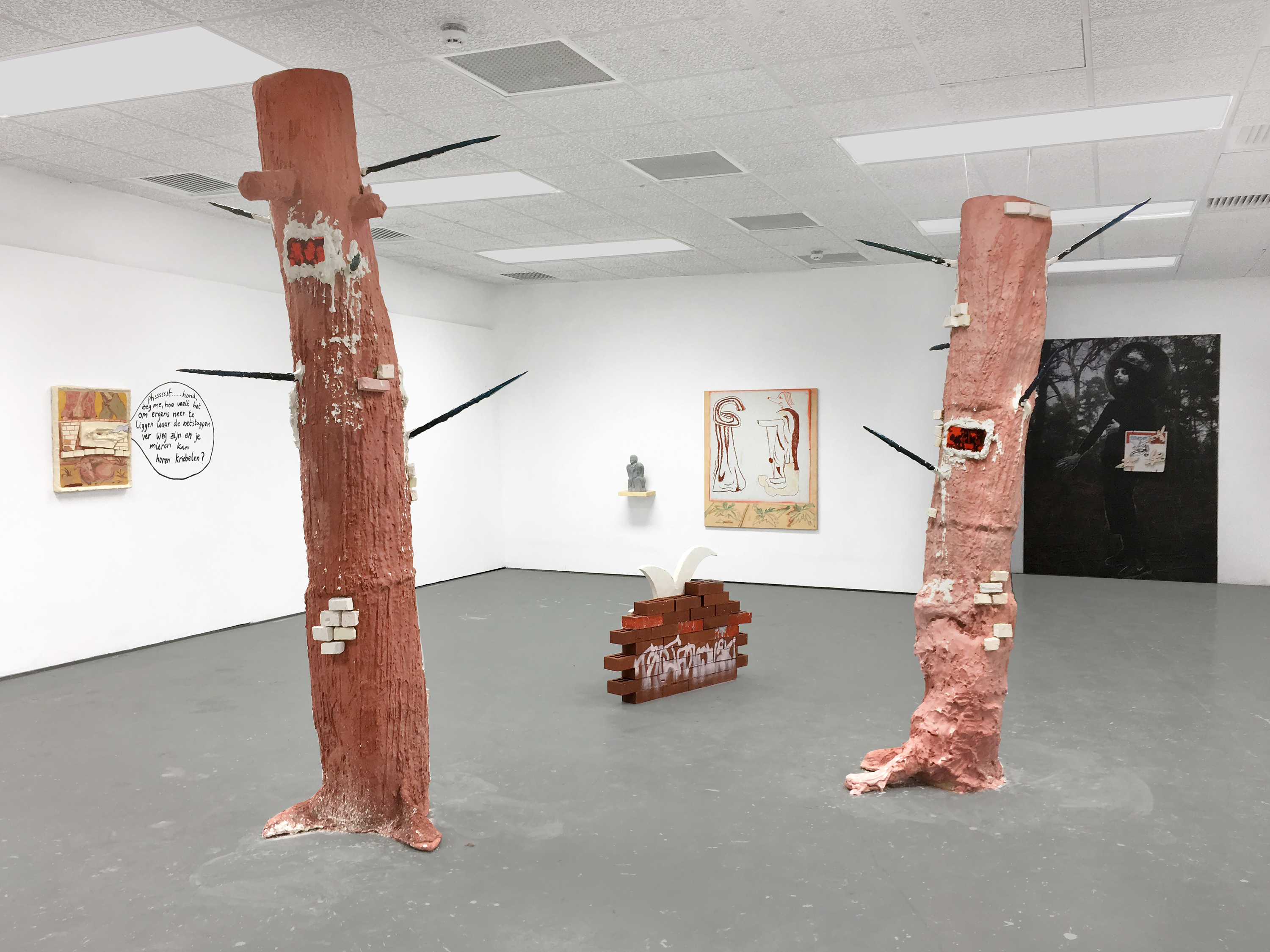
Asylum Install, 2019
(Laughs.) But I guess the texture is also so malleable and tactile, that it allows you the freedom to whip it up like meringue. In some works, it has the surface quality and temporality of ‘60s/’70s woodchip wallpaper. Do interiors and place inspire your work, so as to set the scene for your narratives?
Not so much interiors, more exteriors. Outside spaces, places, the living organisms found there. Animals in the forest and people on the street. A few years ago we lived on The Turnhoutsebaan, Antwerp’s naughtiest street. So many recurring characters went up and down it, night and day. At the time we were there I was obsessively watching Midnight Cowboy, and remixing the sound track with my musician friends, Drones Club. One of the people that caught my eye the most was this real life cowboy. I saw him all the time, and then finally took his portrait photograph. The Turnhoutsebaan is truly wonderful and we had a great time living there. It’s dirty and exciting and a bit scary a night. I made some Midnight Cowboy paintings (which were totally awful) but I made sure the show had some neon and a smoke machine, to help set the scene. But such obvious representations isn’t something I’d do again in such a hurry.
Like characters, there are heaps of recurring symbols and motifs within your work. You’ve created this new language of metaphorical imagery, which perform like familiar characters on and off the canvas. Are they symbols for the self?
In a way, yes. I was looking at an old family crest from my Polish side, and started to try to pick apart the elements. After some research I was led down a path researching the ancient Polish occult alphabet. In the country’s beginnings, each tribe would have an ‘outcry’ which they would either scream on their way into battle or use as a mantra. These outcrys were often summarized as a symbol, many of which lost their original meaning over time. In the alphabet I found a symbol which perfectly matched one found in my family crest, and with its original meaning still attached: Ostoja (refuge). This word ‘Refuge’ felt very poignant at the time I discovered it. Brexit had just been voted by the British public and there was a heavy feeling of divide: dismay by some, anger by others, rejoicing for many and a newly instilled feeling of entitled nationalism for a few.
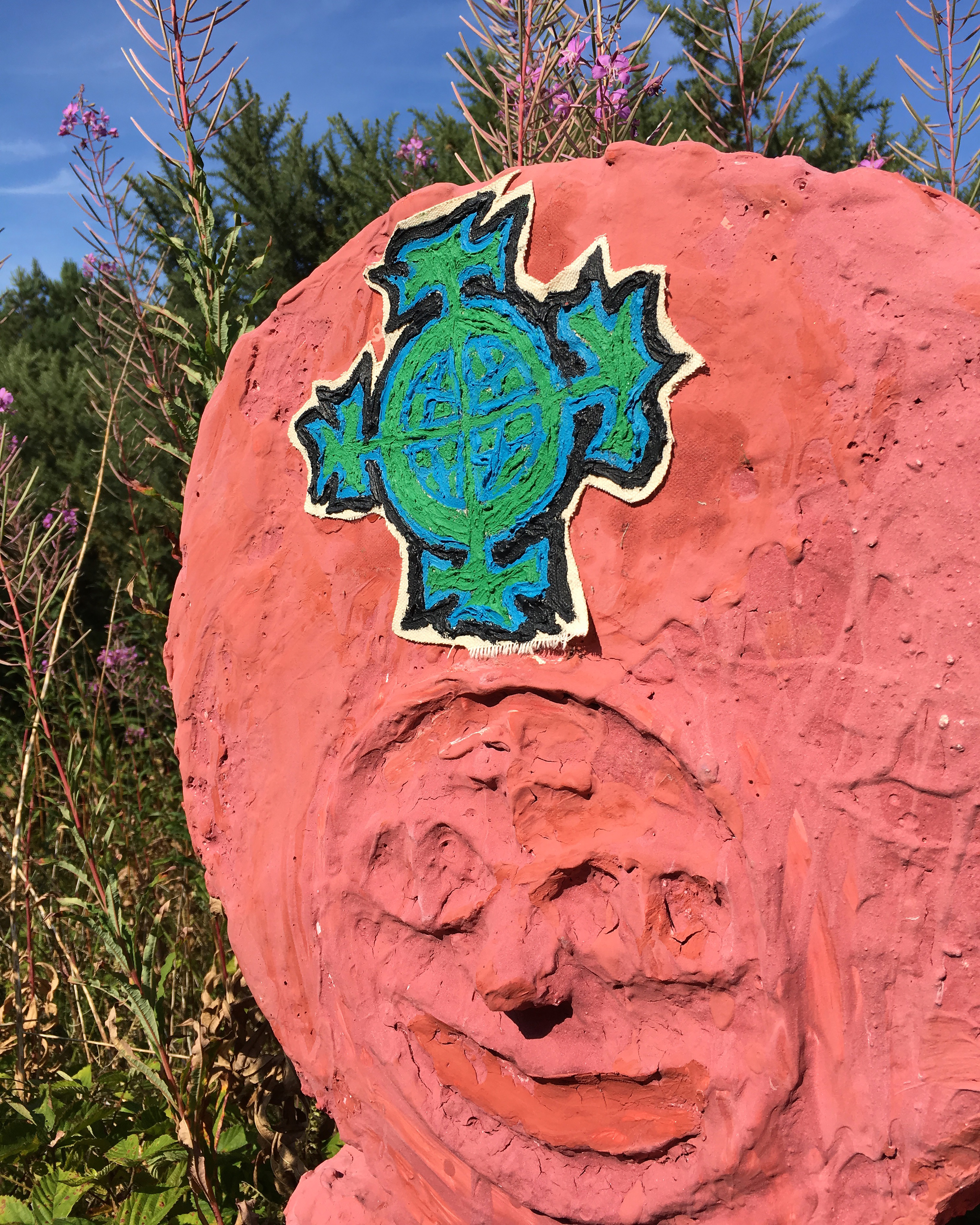
Unity, 2019
At the time, I wanted my work to be beacons of hope and love; bandages for division. So with the help of some of these occult symbols that had perhaps lost their meanings, I tried to build a new language. Looking at each symbol, I attached new meanings by seeing if there I was anything I recognised in it. For example, one looked like the Ministry Of Sound logo, which I modernised to mean ‘Unity’, as the dancefloor of a throbbing club is an amazing leveler of gender, race and sexuality. Another of the symbols has the shape of a strange goat or frog. I gave it the new life of Mother Nature and rendered it into a ceramic frog type creature, which I’ve since painted a few times as well. This frog of mother nature has carried on into my latest body of work.

Take Cover, 2020
This is really interesting – your mind and body become a conduit for information; decoding and encoding it again through paint. Do these icons also shapeshift or develop to form new chimera within your work?
Hmmmm, if I’m honest I’m not so sure consciously. Love is a big word with many faces, so a symbol depicting love will always be diverse.
And finally – you’ve just begun a new chapter, moving to mainland Europe and leaving this island. What are your hopes for the future?
To just simply enjoy the many countries surrounding Belgium (where we currently are) and the Low Lands themselves! Eat good bread, embrace culture, explore the environment and paint. Live, laugh, love and be in the EU x
-
If you like this why not read our interview with Short Supply
-
© YAC | Young Artists in Conversation ALL RIGHTS RESERVED
